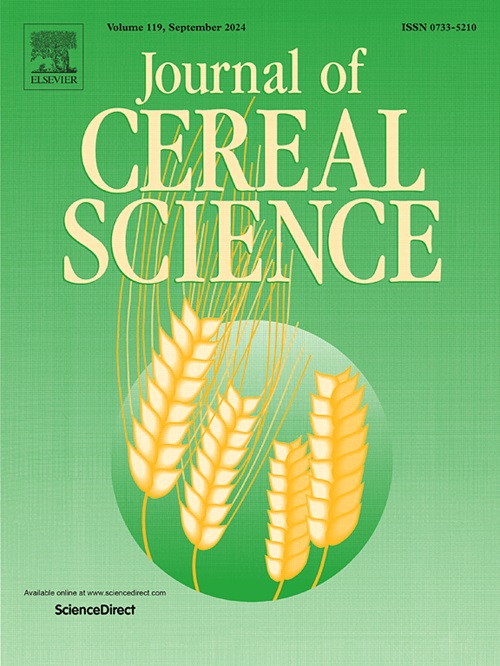Genetic analysis of grain protein content and deviation in wheat
IF 3.9
2区 农林科学
Q2 FOOD SCIENCE & TECHNOLOGY
引用次数: 0
Abstract
Grain protein content (GPC) is generally inversely correlated with grain yield (GY) but some genotypes consistently have higher or lower grain protein contents than predicted by simple regression analysis: this is called grain protein deviation (GPD). Positive GPD reflects greater nitrogen use efficiency and is an important target for breeders to develop more sustainable types of wheat.
Here, we investigate the genetic architecture of GPC, GY, thousand grain weight (TGW) and GPD using a population of 104 doubled haploid lines derived from a cross between two cultivars with positive (Hereward) and negative (Malacca) GPD and grown in replicated randomised field trials over three years. A total of 9 QTL were detected for all traits, five for GPC, two for GPD and one each for GY and TGW. All of the increasing alleles for GPC and GPD and the single QTL for TGW were contributed by Hereward while Malacca contributed the single increasing allele for GY. The two QTLs for GPD located on chromosomes 3A and 5B explained 23.3% and 16.6% of the variance in the sample sets, respectively. Three QTL for GPC (on chromosomes 3A, 3B, 5B) each explained more than 14% of the variance, with those on chromosomes 3A and 5B having similar locations to the GPD QTLs on the same chromosomes. A survey of the gene content between the markers bordering the confidence intervals for the two GPD QTLs on chromosomes 3A and 5B identified 136 and 704 protein coding genes, respectively, including possible candidate genes.

求助全文
约1分钟内获得全文
求助全文
来源期刊

Journal of Cereal Science
工程技术-食品科技
CiteScore
7.80
自引率
2.60%
发文量
163
审稿时长
38 days
期刊介绍:
The Journal of Cereal Science was established in 1983 to provide an International forum for the publication of original research papers of high standing covering all aspects of cereal science related to the functional and nutritional quality of cereal grains (true cereals - members of the Poaceae family and starchy pseudocereals - members of the Amaranthaceae, Chenopodiaceae and Polygonaceae families) and their products, in relation to the cereals used. The journal also publishes concise and critical review articles appraising the status and future directions of specific areas of cereal science and short communications that present news of important advances in research. The journal aims at topicality and at providing comprehensive coverage of progress in the field.
 求助内容:
求助内容: 应助结果提醒方式:
应助结果提醒方式:


